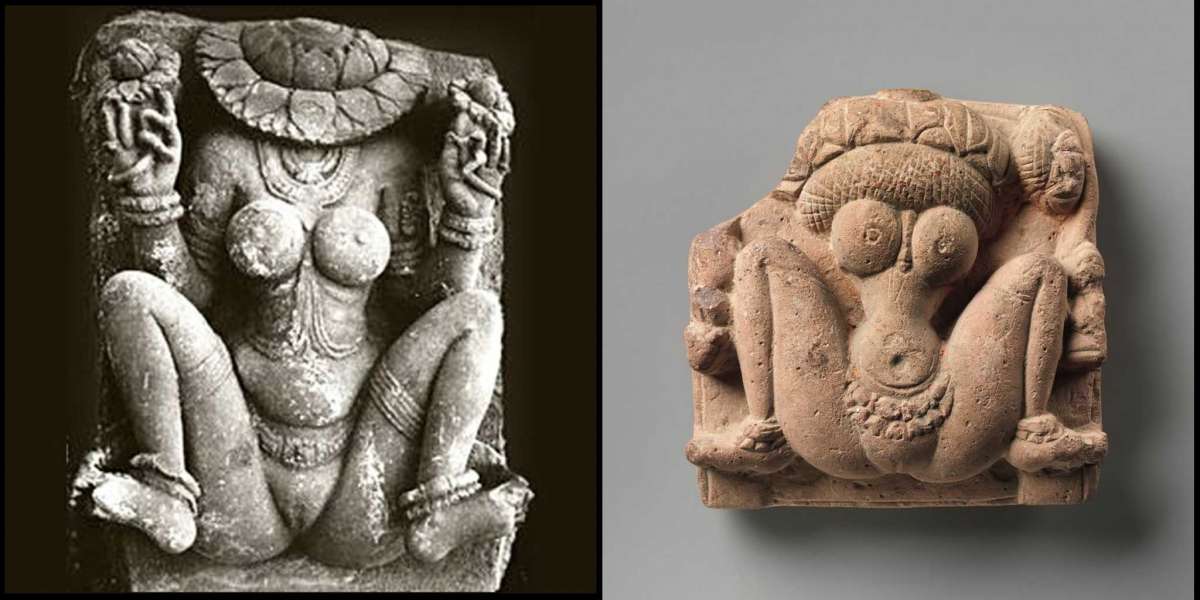Transculturality has been deeply engraved in Indian civilisation since ancient times. India has been a welcoming land, it welcomes all kinds of people, their cultures, traditions, art etc. It is a land full of wonders, taboos, mysteries and diversity. Here we find at each step, things that we have never seen before, things that don't even have a scientific explanation. The more we get into the roots of this civilisation we encounter a whole new set of mysteries and taboos. One such historical encounter was the sculptures of the goddess Lajja Gauri.
Scholars have failed to analyse the actual purpose of this sculpture but they have proposed many different possibilities about it. Most popular story among historians about this sculpture concerns itself with the union of Lord Shiva and Goddess Parvati. Going back to the realm of Lord Shiva, there runs a mythical story on Lord Shiva and Parvati (Mother Goddess). After their wedlock they returned to Kailash and retreated into the caves of this divine mountain. For eons they remained here, in union away from all the worlds. Meanwhile, there was trouble in Devaloka and on earth as the Asuras had again begun to harass the devas and other immortals. This disturbed the Rishis, Devas and other Gods and they came to the cave entrance seeking Lord Shiva’s help to vanquish the charging Asuras. Realizing that they were unable to awaken Lord Shiva out of his marital bliss, they decided to step into the cave. Deep within the cave, the Lord and his consort, lay in union. Parvati was taken by surprise by the sudden entry of the heavenly folk, and in order to save her embarrassment, she picked up a full bloomed lotus and covered her face.
This moment of Parvati attempting to cover her embarrassment (lajja) has been depicted in sculpture as Lajja Gauri showing her face covered with the lotus as well as her holding a lotus bud in each hand signifying fertility, life and creation. Her raw beauty has been depicted without any subtlety, her moment of union with Lord Shiva has been captured by the sculptor.
Apart from the mythological tales, historians have also provided other explanations for the sculpture. The first artistic representations in India of the goddess are dated, by most of the authors, during the 3rd century AC, but this date can be pushed back to the Shunga period. The attitude of the Lajja Gauri is deemed to represent a woman in labor in the stage of expulsion. The image of childbirth is attributed to the fertility cult as a symbol of regeneration. Other scholars see a pornographic image and are reluctant to comment on the artistic representation and to publish the antiquities discovered during archaeological excavations.
The Lajja Gauri attitude is associated with the matrimonial fertility cult dominant in the ancient civilisations from the earliest ages of humanity to the 3rd millennium BC. It represents an explicit invitation to sexual intercourse, and then reproduction of the species, in societies threatened by climatic conditions, wandering, child mortality and disease and then by war and famine. The flat bellied goddess demonstrates her intention and her availability for the act of reproduction. Figured with a swollen belly, it is the image of childbirth, regeneration of the species. Her artistic representation is cultic and not pornographic, this concept has been invented a long time later in history by societies very socially constituted.
The culture of such a representation is not only confined to India. If it was the story of the union of Lord Shiva and Parvati then how come it was recognised internationally in ancient times. It was surely a form of goddess as it was represented in temples at many places but the representation belonging to the mythology can be questioned here!







